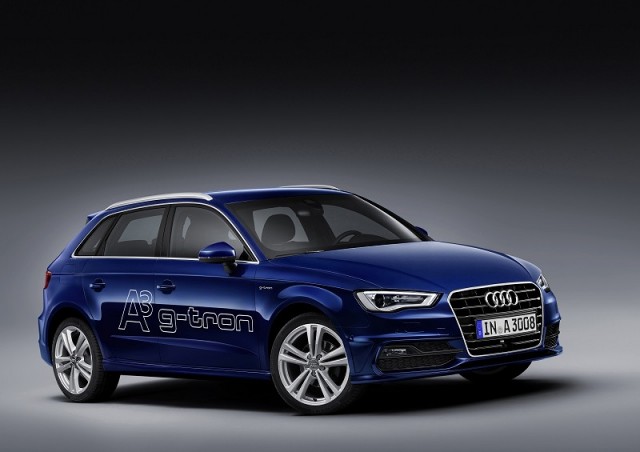Audi calls this A3 Sportback powered by CNG a 'large step towards sustainable mobility'. The car will go on sale towards the end of the year, although Irish sales are unlikely. Fuel is provided either by conventional CNG or chemically identical synthetic CNG produced by Audi at a plant in Germany. The fuel is produced using renewable electricity to generate hydrogen, which is then combined with waste CO2 from a biogas plant.
Exterior
On the surface there is nothing to make the g-tron stand out from petrol and diesel-fuelled A3s. The filler cap for the two CNG tanks is located under the same flap as that for the regular tank.
Interior
The instrument cluster includes gauges to monitor the level of fuel in the two tanks. Otherwise Audi promises the same level of equipment as the standard A3.
Mechanicals
Two-stage pressure reduction ensures the right fuel pressure is maintained at the injectors, providing more fuel when the driver requires extra performance. The gas tanks are monitored by the engine management system, automatically switching to petrol when gas runs low. After refuelling, and in very cold conditions, the engine is started on petrol and switched to CNG as soon as possible.
The engine is based on the 1.4-litre TFSI unit with changes to the cylinder head, turbocharging, injection system and catalyst. Performance is identical regardless of fuel with 110hp and 200Nm available. Quoted performance figures are 0-100km/h in 11.0 seconds and 190km/h top speed. On CNG the range is 400 kilometres with an additional 900 kilometres available on petrol. In gas mode CO2 emissions are 95g/km, but running on Audi e-gas that is calculated to drop to the equivalent of 30g/km.
Anything else?
Audi's e-gas plant will produce around 1,000 tonnes of e-gas and chemically bind 2,800 tonnes of CO2. It would apparently take 224,000 beech trees to absorb the same quantity of gas in a year. The fuel is enough to power 1,500 A3 Sportback g-tron vehicles for 15,000 kilometres. The e-gas plant could also produce hydrogen for fuel-cell vehicles.

